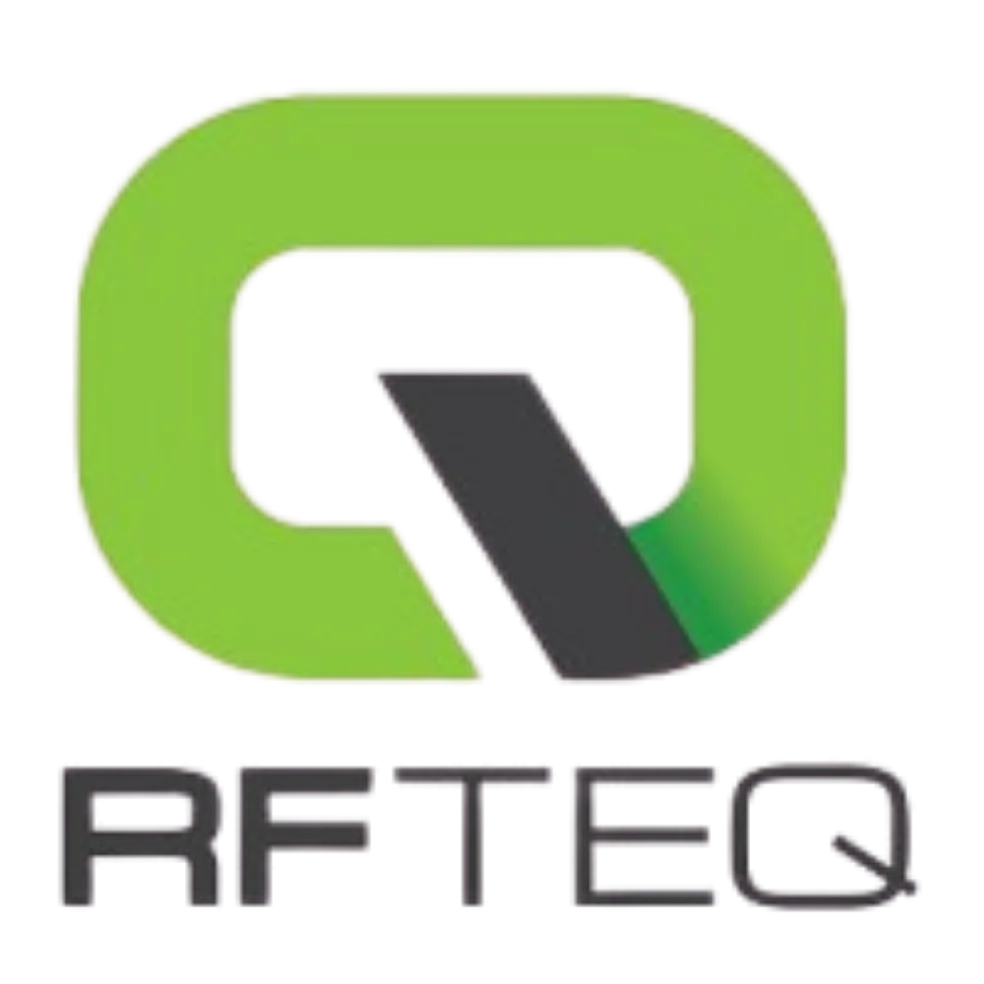
Findings & Recommendations Report

Peter Kinnaird

26th June 2025
Initial Overview
A two-day workshop with senior RFTEQ team members was held to discover where the business was at strategically and what future directions & issues they should address.
The 2 days presentations links are:
From the outset it was apparent that there are significant issues that are creating an impact on the business. These will be addressed in the report.
Whilst the Senior Team are loyal to the idealism of the company there appears to be dissatisfaction on other Team Members performances and a tendency to live on past achievements.
There is very little actual preparation for future directions, especially any format of diversity. There is also an inward feeling of the Brand based on the past.
The following will address the main issues with two sections for each issue:
1. Concerns
2. Recommendations
At the end of the report will be a proposed timeline to bring all recommendations into an implementation phases program and who is most suitable to manage each one.
Report Index

Brand Asset
What does RFTEQ stand for as a Brand Asset?


Vision Values
What are RFTEQ's vision values?


The Team Structure
What are the current team structure & values?

Board Values
What is the current board value?


Cultural Attitudes
The inward culture attitude & its external effects


Future Directions
What are the future directions for RFTEQ?

Tenders
The value & future scope of tendering


Marketing
What are the recommended marketing strategies?


Leadership
Leadership needs to be two focuses

Timeline
What is the timeline for implementation?


Recommendations
What are the change recommendations?
Brand Asset

What does RFTEQ stand for as a Brand Asset?
Concern
The brand asset is basically very low as no one recognises what the initials mean.
It has a restrictive new business directions basis.
The logo nearly answers its own poor value by having a Q as to Question -what does RFTEQ mean?
recommendations
Three examples were presented to simply show what a logo & vision statement can be like for RFTEQ’s future.

Initially these suggestions brought some cynicism but after explanation- it was clear to all that a new brand is required.
Vision Values
What are its vision values?
Concern
The main concern was there 3 different vision values shown on the current web site of which none really stated with clarity and none of the Team Members present could easily recall them.
If internal people do not know the vision, then how does that become an asset clarity to external parties such as new or prospective clients.
recommendations
Whilst the 3 simple vision lines on the example logo’s may not be fully in line with RFTEQ changing -they do envisage a similarity for what it needs to be like.
RFTEQ once the new name is decided upon then have a vision line created by professional Visionary.
The same needs to be done with the Capability Statement document – a professional is needed to create a valuable document not just someone within the company reviewing it.

The Team Structure & Values
What are the current team structure & values?
Concern
This is an area of major concern.
Each person's roles are not clearly defined not KPI’ed for performance.
There also is a tendency to offload work to whoever puts their hand up thus there is no Process Flow chart of all functions and who does what throughout the business.
There is also far too much combined decision making and over communication to all.
The team spend far too much time in meetings and conversations rather than implementing within their role's functions scope.
recommendations
An operational process flow chart needs to be created URGENTLY and then all positions need to be role defined (not person defined), KPI’ed and undertaken as such, all roles should also be a base plus KPI target achieved reward structure.
This will unsettle some, but it is far more critical for the businesses future than 1 or 2 people finding it is time for them to leave and move on.
The business needs to recognise the loss it causes by having people not suitable, wrong personalities or too disruptive.
This undertaking needs to be implemented as soon as the process flow chart is finalised.
The Board Values
What is the current board value?
Concern
The original value of the board was apparent to the need of the business to develop.
However, currently it has next to no value if in reality it is actually being too restrictive. It has no external perceived value.
recommendations
Change the Board to a Shareholders Committee which meets twice a year to discuss shareholder value issues.
Introduce Advisory Councils which are the CEO and 2 independent people who have a value in contacts and an impressive reputation within that particular industry & niche that the company is wanting to attain a stronger market share of business from.
This also enables to have experts /reputable people representing just that particular Niche industry, which to external potential & current clients adds great value.
Company Culture

Concern
The RFTeq team culture is being portrayed as good but once questioned it soon becomes apparent there are many individual culture feelings that are in contrast.
In this diagram the Visible cultural aspects are all being well supported except for People & Office Environment which during the workshop were often negatively mentioned.
What is of more concern is the number of hidden cultural aspects that became apparent of being of concern – Out of 20 there are 14 culture concerns -not by all staff but definitely by various people.
There is a major culture of “can't the business stay as it has been and not have to undertake anything new”.
The external culture appearance is one of some team members being individualistic not as a team member and others as no passion or pride to deliver higher than just what is required and requests as being sometimes reluctantly taken on.
recommendations
This sector of the business needs to be addressed in a well-planned and educational way.
It is recommended that a discussion be held with a Culture professional to see what type of Culture Change program can be introduced and ongoingly conducted.
The culture will also be affected by the proposed recommendations and each role definition and KPI’s but that will not reestablish a strong culture just by itself.
Externally, the new culture will need to be part of the marketing program and the team be made well aware of its promotion to the business world.
Tenders
Strategies for building a winning tender proposal
Concern
It became very apparent that whilst the person undertaking the submission work of Tenders is a nice person, there was a strong feeling of struggling to submit on time and no exploring for other tenders other than those submitted to Defence.
When considered it is not a professional image on the company as a whole nor is it cost efficient.
recommendations
There is definitely more business there to be had -just needs to be dug out, but in a respectful professional process manner.
Tenders should be outsourced to a professional company so that they will be far better & more economically presented.
The follow through to attain success will need to be undertaken by a Professional Business Salesperson who specialises in Tender contract attainment.
These changes will provide relief within the company team as well as become more economical and successful.
Future Directions
What are the future directions for RFTEQ?
Concern
Due to the restrictive nature of the current style of collaborative decision making -undertaking to reach out into new markets would prove to be extremely difficult
recommendations
After showing a few industries where RF is being perceived as having a considerable growth opportunity within.
The team started to envisage several potential markets, however, did not know how to really-non emotionally evaluate them.
Nor, how to develop a program of -what/when/how feasibility for each perceived opportunity.
This will require an experienced person to help them establish this process and how to conduct without bias to any.

Marketing
What are the recommended marketing strategies?

Concern
This is basically non-existent -the web site is very poor and outdated, there is no media feeds happening, non-regular client newsletters, no strong presence in any media or news outlets.
Even Tenders are weakened by such low-quality marketing of the brand.
recommendations
All of the team have to recognise that none of them have any correct experiences within the marketing profession.
A complete marketing program needs to be designed to cover – web presence/industry awareness/relevant expos/email campaigns to targeted industries/businesses/media- both within Australia & Overseas.
This program needs a lot for planning and resources to undertake- for this Team it is far better to offload to an external source which are Niche specialisation focussed to plan & conduct.
Leadership
Concern
There is a real lack of impactive Leadership.
Primarily as the current CEO is both restricted by the Board and the perception by all that he should be collaborative with all, on nearly everything.
This has created self-doubt in two facets:
1: In the CEO himself as to his capability to be a good impacting & implementation CEO
2: The Team don’t want to give up -knowing everything that goes on -which suggests they don’t want change or are frightened as to what true leadership may bring to their role.
This is choking the business both internally & externally for any format of growth.
It will also prohibit any pathway for future placement of a pure operational focused CEO and an Executive Strategist to grow the business.

recommendations
With the recommendations being proposed many, especially the operational process flow chart, each Role specification & KPI’ed will start to allow leadership authority & more time freedom to become a more functional & effective CEO.
The recommended changes to the Board & Advisory Councils will also further enable the capability of implementing changes for the current CEO, it will enable the business to undertake a progressive improvement in operations as well as new services future.
It is vital to note- that a strong focus must be kept on the recommended interim dual role of CEO & Executive Strategist to be planned to become two separate roles within a 12-month time frame.
This will enable a both a much stronger focus to be undertaken on both vital facets of the business-operational & growth.
Timeline of Implementation

Concern
The critical challenge of a timeline plan for implementation is always at risk of being incorrectly managed or loss of importance & focus if implementation is left to internal people to manage – there is far too much political games at play, distraction of own workloads and not enough external view capability to see if adjustments to Plans B or C need to be implemented.
It also does not provide enough unbiased or experienced capability strength to manage other external sources for delivery of their sections of involvement within the implementation timeline.
recommendations
The timeline is vital to successfully undertaking significant changes in a cohesive & change related manner & process to ensure all is achieved.
It must be implemented in the Business Curve process manner.

It also will enable flexibility to adjust if there are any roadblocks or unperceived issues arising.
Thus the need to have Plans B&C ready for continuance.
A vital aspect that has been proven many times is to have an experienced external source where there is no emotion about making changes and the disruption they may make to some people within the business.
It must be remembered at all times that no one person is bigger than the company.
This is a significant part of the current culture that will be replaced as the plan is implemented over the timeline.
This section for the recommendations will take significant time to plan as there are many facets to be considered, and these changes must be implemented in a minimal workload output disruption manner.
In having an independent resource, it will also enable constant revision to be undertaken without constant internal or collaboration meetings – it will become an inserted formatted part of the business's operations for the next 12 months then reviewed for the following years requirements.
The only person internally that should be reported to is the CEO for their input & decisions.
This timeline & the process flow will become the base asset of the whole business.
Support Recommendations
As mentioned previously – to leave the development of the recommendations above to any internal sources will without doubt create a very high risk of failure as have the vast majority of businesses who have tried to do so in the past.
brief
The majority of these recommendations can be developed remotely.
However, it is suggested that there be a pre-agreed rate of Teams/Zoom meetings with the CEO and a quarterly meeting in Adelaide with NBA, RFTEQ CEO.
Any other party/employee required for such meetings will be at the mutual agreement of the importance to have in such meeting.
recommendations are as follows
| Item | Description | Estimated Cost |
|---|---|---|
| A | Timeline plan creation - NBA | $1,500 - $2,000 |
| B | Operations Flow Plan Creation - NBA (input needed from RTFEQ management) | $1,500 - $2,000 |
| Other External Tasks | ||
| 1 | New Name | $1,000 - $1,500 |
| 2 | New Logo | $500 - $1,000 |
| 3 | New Vision Statement | $500 - $1,000 |
| 4 | Professional Business Strategist for current workflow expansion and future planning | $2,000 - $4,000 |
| 5 | HR expert for team roles, KPIs, salaries & suitability review | $2,000 - $3,000 |
| 6 | Advisory Councils structure & initial set-ups | $1,000 - $3,000 |
| 7 | Marketing Agency (pricing depends on brief) | Pricing TBA |
| 8 | Experienced Change Merchant for CEO - Business Strategy | Pricing TBA |
| 9 | Overseeing & Implementation Management - See NBA quote on this below | NBA Quote |
| Time Commitments | ||
| Month 1 | 1.5 days/week equivalent | |
| Month 2 | 1 day/week equivalent | |
| Months 3–6 | 2 days/month equivalent | |
| Months 7–11 | 1 day/month equivalent | |
| Month 12 | 4 days – full review & 12-month planning | |
| NBA Charge Rates | ||
| Full Day | $1,400 + GST | |
| Half Day | $900 + GST | |
| * Travel, accommodation, special equipment/software not included. All expenses to be pre-approved. | ||
indicative pricing
*Please note these prices are indicative only and cannot be accepted as final until the suppler has been fully briefed and are confident in provider a quote for such services.
In conclusion
Whilst the base of RFTEQ is reasonably sound, it has no preparation for change or the future and as such needs to undertake both immediately.
To do such through using any internal sources it will not only restrict the success of change & developing its future, but it will also have the continuance of the current negative/restrictive culture.
The perception of what has been recommended can seem to be very onerous and potentially disruptive and expensive.
Whereas in reality by using external sources it is quite the opposite.
This allows the current business operations to continue to produce whilst a massive series of changes can be planned for, developed & implemented with minimal disruption.